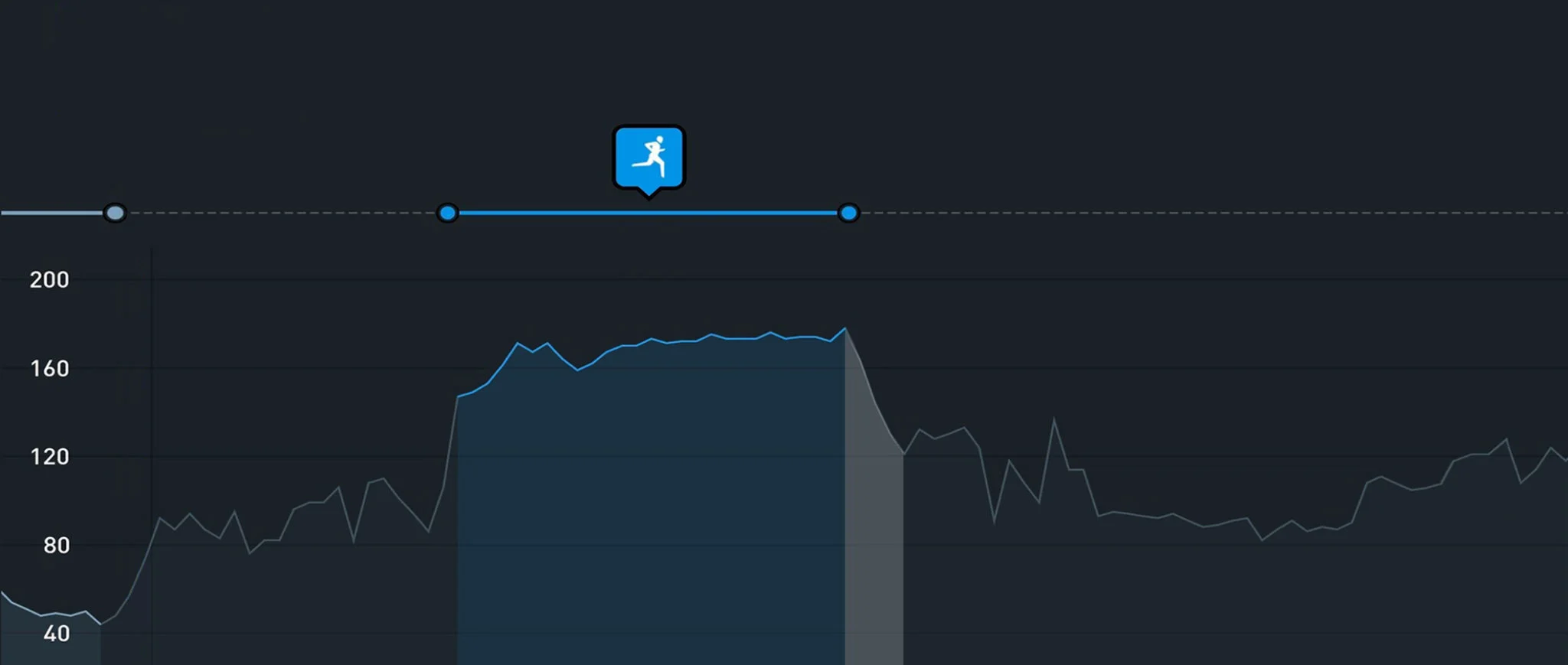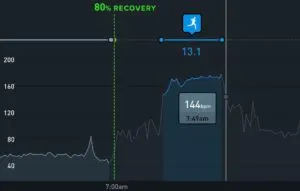Topics
- Article
- Heart Rate
Heart Rate Recovery: Why it's a Sign of Fitness & How to Improve it

Learn how to measure your heart rate recovery time and why this is valuable information to have.
What is Heart Rate Recovery?
Heart rate recovery (HRR) is the decrease in your heart rate as it returns to baseline following strenuous activity. Also commonly referred to as “recovery heart rate,” HRR can be a useful metric for evaluating your physical fitness.
How to Measure Heart Rate Recovery TIME After Exercise
To calculate your HRR, check your heart rate immediately after you stop exercising. Then check it again a minute later and note the difference. Heart rate recovery is normally measured at 1, 2 or 3-minute intervals, with 1-minute HRR being the one that is most commonly used. For example, if your heart rate is 170 beats per minute when you finish working out, and then it drops to 150 bpm a minute later, your HRR is 20 bpm.
Why is HRR a Sign of Fitness?
As is the case with heart rate variability (HRV), heart rate recovery is a product of the interplay between the sympathetic and parasympathetic nervous systems. When you start to exercise, the sympathetic (activating or “fight or flight”) branch takes control and sends signals to your heart to beat faster in order to increase blood flow throughout your body. The opposite then occurs when exercise stops, as the parasympathetic (deactivating or “rest and digest”) branch takes over and tells your heart to beat slower. Research shows that heart rate recovery time is a result of how fast your autonomic nervous system can “shift gears” from sympathetic activation to parasympathetic. When this happens quickly, it is an indication that your nervous system is balanced and “running on all cylinders.” It is also a sign that your body is well conditioned to adapt to its environment and perform at its best. Additionally, studies have also found that heart rate recovery correlates with your overall cardiovascular health, and that poor HRR is associated with increased risk of cardiac events and mortality.
What is a Good Heart Rate Recovery Time?
A study published in the New England Journal of Medicine of nearly 2500 adults over a 6-year time frame observed that “the median value for heart rate recovery was 17 beats per minute, with a range from the 25th to the 75th percentile of 12 to 23 beats per minute.” However, the average age of the participants was also 57 years old, and HRR has been found to decrease around age 60. Another study from 2015 tested 274 elite male athletes. Those over the age of 18 had an average 1-minute HRR of 29.5, compared to 22.4 for subjects under 18. One thing to note is that not only does heart rate recovery vary from person to person, it can also fluctuate for you from day to day. A 2016 case study entitled The Science and Application of Heart Rate Recovery examined the HRR of runners post-workout in relation to their daily WHOOP recovery (how ready your body is to perform). Across the board, the athletes had faster heart rate recovery times on days when their WHOOP recoveries were higher.

How Can I Improve My Heart Rate Recovery?
In the long term, the same things you might do to improve your overall fitness level will also benefit your heart rate recovery, like regular exercise, proper nutrition and maintaining your body’s natural circadian rhythm. On a daily basis, optimizing the quality and quantity of your sleep, sufficiently hydrating, practicing meditation or breathwork to relieve stress, and avoiding alcohol can all give a boost to your HRR.
Monitor HRR in Real Time Using the WHOOP Strain Target
With WHOOP Strain Target, you can watch your live heart rate while you’re working out, and see the impact of your exercise in real time as quantified by our strain metric (a measure of cardiovascular exertion). It gives you activity level recommendations based on your daily recovery, and also tracks which heart rate zones (percentage of max heart rate) you’re training in. Upon concluding your workout, continue to monitor your heart rate for 1 minute in order to determine your HRR (WHOOP does not automatically track it).
Learn More About Training with Heart Rate Recovery
- Master trainer Kirsty Godso discusses tracking HRR as a “great accountability metric”
- A real-life “fatigue meter” from video game hockey
- 4-time Olympian Angela Ruggiero explains how Team USA used HRR to set lineups